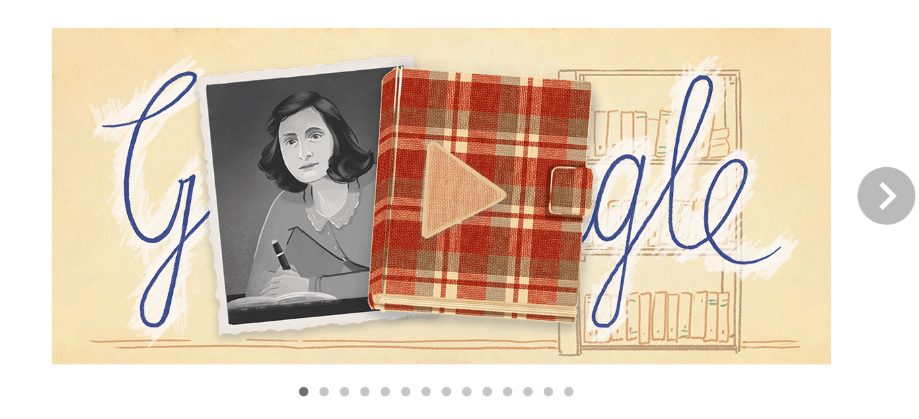Honouring Anne Frank : Today’s Google Doodle Honours Holocaust victim Anne Frank
The Doodle for today’s slideshow celebrates the Holocaust survivor and well-known Jewish German-Dutch diarist Anne Frank. Her memoir of the Holocaust and the war, even though it was only written when she was between the ages of 13 and 15, is nevertheless one of the most moving and widely read narratives to date. The real-life passages from her journal that are featured in today’s Doodle depict what she and her friends and family went through while living in hiding for more than two years. Her journal, which is regarded as one of the most important volumes in contemporary history, was published 75 years ago today.
On June 12, 1929, Anne Frank was born in Frankfurt, Germany. However, her family quickly relocated to Amsterdam, Netherlands, to avoid the rising prejudice and brutality that millions of minorities were subjected to at the hands of the burgeoning Nazi party. When Anne was ten years old, the Second World War began. Shortly after, Germany invaded the Netherlands, bringing the conflict to her family’s home.
The Nazi regime targeted Jews in particular, subjecting them to forced relocation to cruel concentration camps, execution, or incarceration. Millions of Jews were compelled to leave their homes or go into hiding because they were unable to follow their religion openly and safely. In order to evade persecution in the spring of 1942, Anne’s family did exactly that, hiding in a covert annex in her father’s office building.

The Frank family had to act quickly and leave almost everything behind to seek safety, just like millions of other people. A checkered hardback notebook that Anne had received as an inconspicuous birthday present just a few weeks previously was one of her few possessions. It quickly turned into her means of permanently altering the planet. She wrote a personal description of her life in the “hidden annex” in its pages over the course of the ensuing 25 months of hiding, from minor details to her most fundamental concerns and dreams. Anne combined her writing into one coherent story titled “Het Achterhuis” (“The Secret Annex”) in the hopes that her journal entries would be published after the war.
The Frank family was discovered by the Nazi Secret Service on August 4, 1944. They were then apprehended, transferred to a prison facility, and subjected to hard labour. Then, they were forcibly transported to the Auschwitz concentration camp in Poland, where they were forced to dwell in close quarters and filth. Margot and Anne Frank were taken to the Bergen-Belsen detention camp in Germany a few months later. Along with the cruel, deliberate execution of detainees by Nazi forces, fatal illnesses spread everywhere. The horrible conditions Anne and Margot were made to endure ultimately claimed their lives. Only 15 years old, Anne Frank.
Despite not surviving the atrocities of the Holocaust, Anne Frank’s chronicle of those years, known as “The Diary of Anne Frank,” has subsequently grown to become one of the most widely read nonfiction works ever written. Frank’s memoir, which has been translated into more than 80 languages, is a mainstay in classrooms today and is used to teach future generations of students about the Holocaust and the deadly perils of prejudice and tyranny.
I appreciate you giving a crucial window into your experience and our shared past, Anne, as well as your unwavering optimism for the future.
Be the first to comment